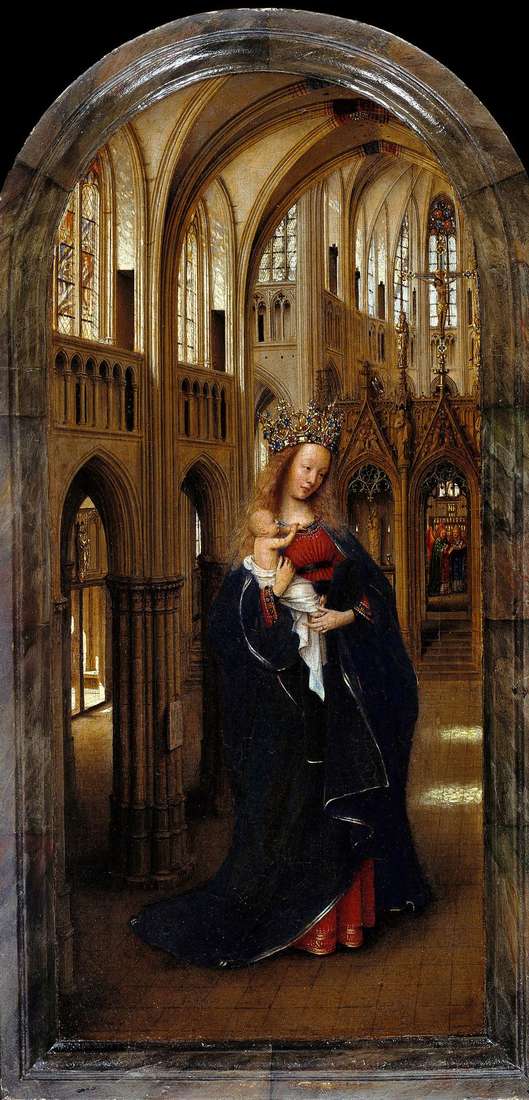
In the painting by Jan van Eyck “The Madonna in the Church,” specific field observations take up an enormous amount of space. Previous European art did not know such vital-natural images of the real world. The artist carefully paints sculptural details, does not forget near the statue of the Madonna in the altar block to light candles, marks a crack in the wall, and outside the window shows the weak outlines of arkbutan.
The interior is filled with a light golden light. Light glides over church arches, sunbaths lie on the slabs of the floor, freely poured into open doors to meet him. However, in this vitally convincing interior the master places the figure of Mary, the head reaching the windows of the second tier. And yet such a non-scale combination of figures and architecture does not produce an impression of improbability, for Van Eyck’s Madonna in the Church is not dominated by the same relationships and connections that exist in life.
The light that pierces it is real, but it also gives the picture lines of sublime enlightenment and gives the paints an extra-ordinary intensity of sound. It is no accident that from the blue cloak of Maria and her red dress across the church, a color echo flashes – these two colors break out in the crown of Mary, intertwine in the robes of the angels in the depths of the church, light under the arches and on the crucifix crowning the altar barrier, sparks in the farthest stained glass of the cathedral.
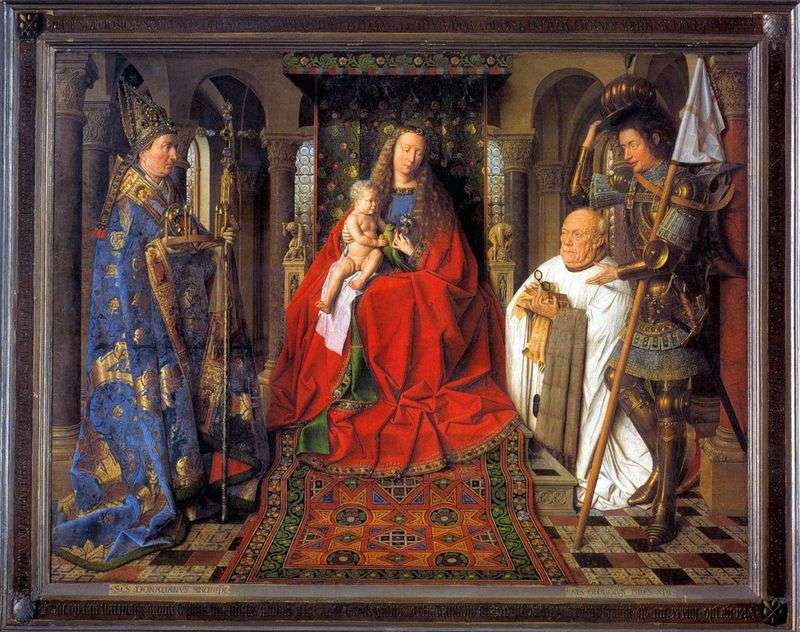 Madonna canon van der Palet by Jan van Eyck
Madonna canon van der Palet by Jan van Eyck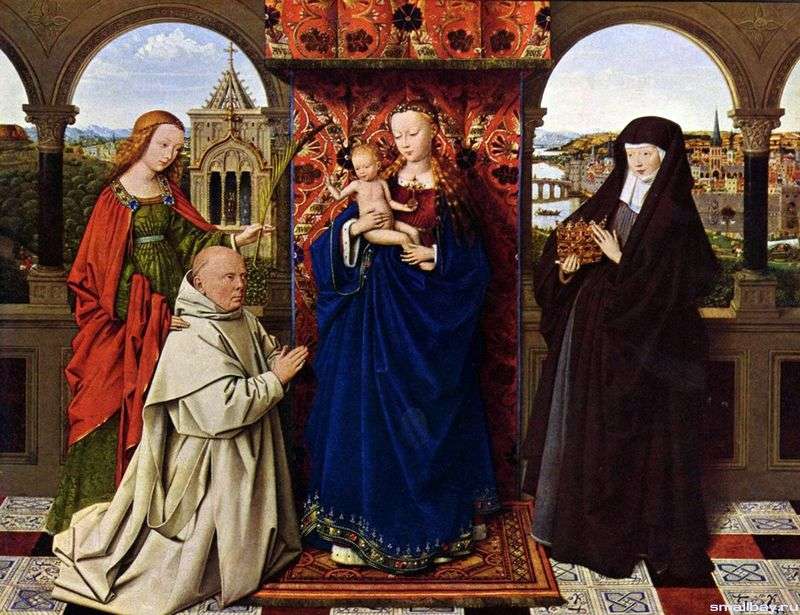 Madonna with the Cartesian monk by Jan van Eyck
Madonna with the Cartesian monk by Jan van Eyck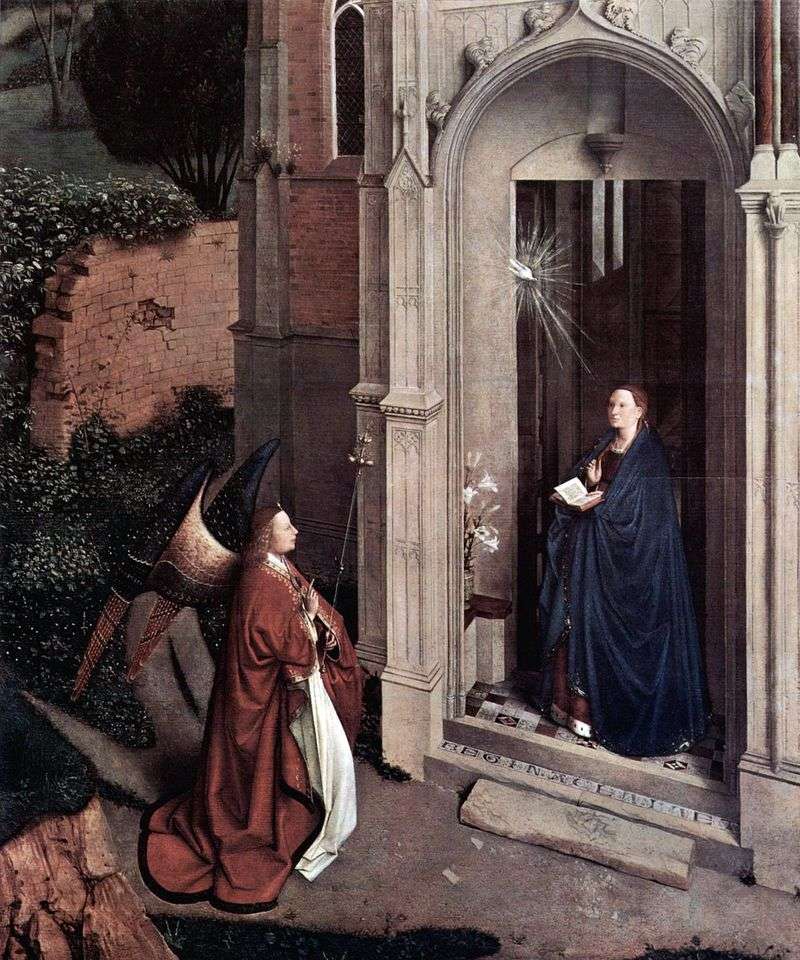 The Annunciation at the Church by Jan van Eyck
The Annunciation at the Church by Jan van Eyck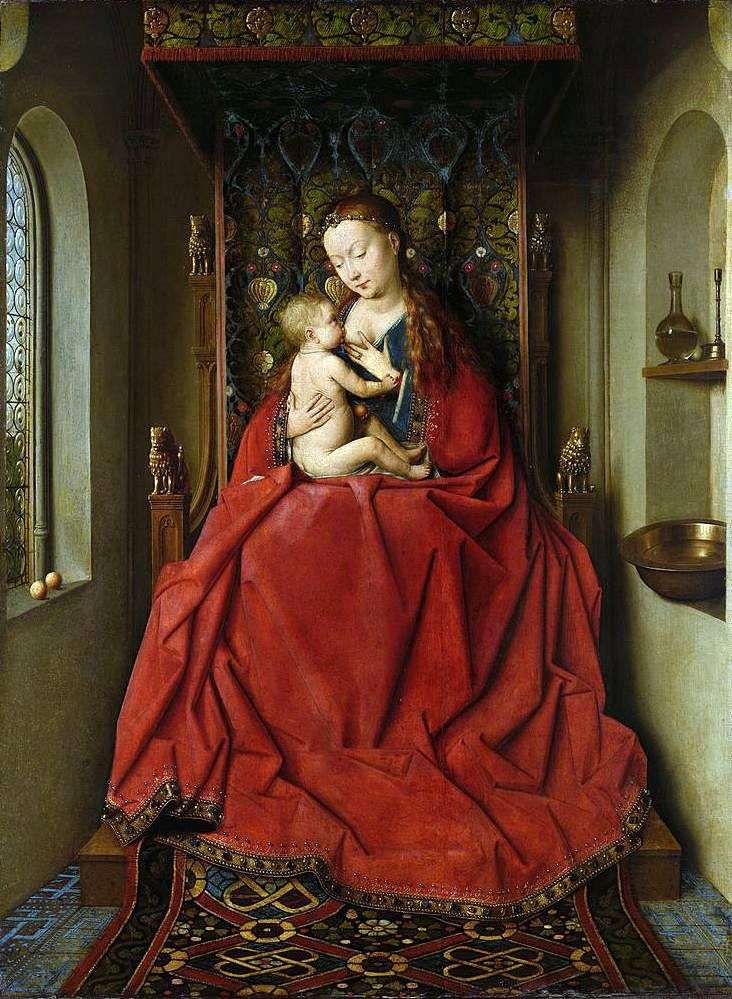 Lucca Madonna by Jan van Eyck
Lucca Madonna by Jan van Eyck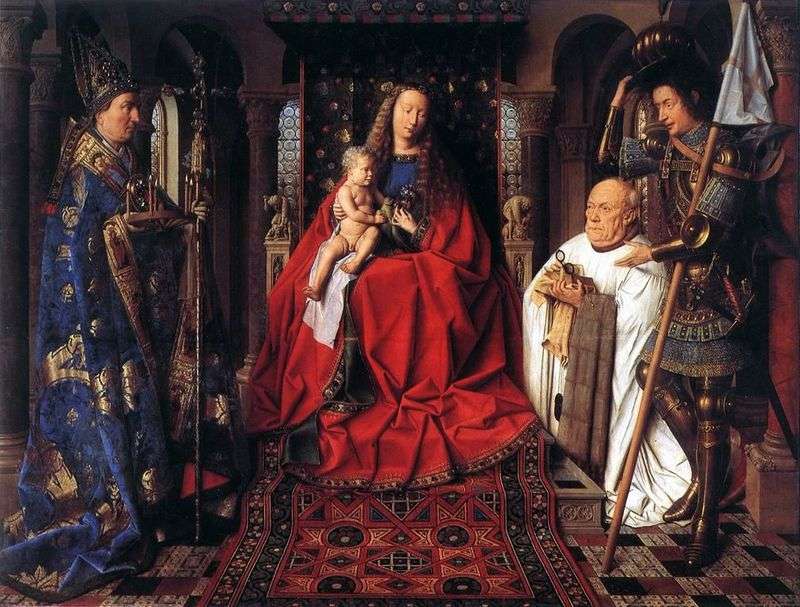 Madonna of the canon van der Palet by Jan van Eyck
Madonna of the canon van der Palet by Jan van Eyck Madonna en la iglesia – Jan van Eyck
Madonna en la iglesia – Jan van Eyck The altar of the Virgin Mary by Jan van Eyck
The altar of the Virgin Mary by Jan van Eyck Lucca Madonna – Jan van Eyck
Lucca Madonna – Jan van Eyck